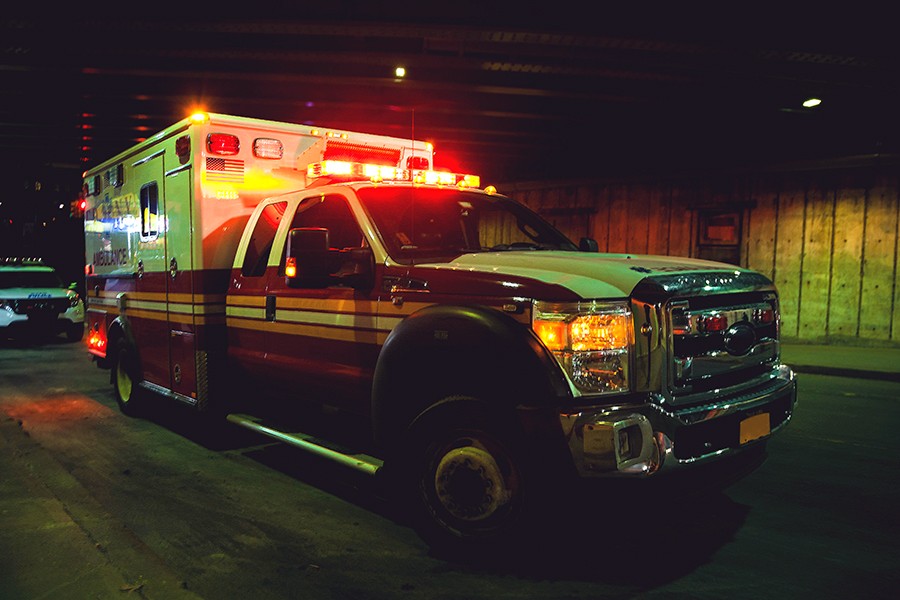A new Johns Hopkins Medicine analysis of national trauma data shows that trauma patients were four times more likely to die from gunshot wounds and nearly nine times more likely to die from stab wounds before getting to a trauma center in 2014, compared with rates in 2007.
A report of the findings, published April 3 in the Journal of Trauma and Acute Care Surgery, says that the increase in prehospital mortality suggests violence is intensifying.
"The data we found suggest that a greater proportion of patients injured by penetrating trauma are dying in the prehospital setting compared to a decade ago," says Joseph V. Sakran, director of emergency general surgery at The Johns Hopkins Hospital and the paper's senior author.
"One must ask the question if what the data show with respect to the injury pattern is secondary to an increase in the intensity of violence," Sakran adds. "When looking at gun violence, the scientific community must approach this like any other public health crisis and develop a data-driven approach to combat these preventable deaths and injuries."
Sakran is an expert in gun violence research and is himself a former victim of gun violence. When Sakran was 17, a fight broke out at a high school football game he was attending, and someone in the crowd pulled out a gun. A stray bullet went through Sakran's throat, rupturing his windpipe. The experience inspired him to become a trauma surgeon to help provide victims with a second chance at life.
For the study, Sakran and colleagues examined prehospital mortality trends in patients at least 15 years old from 2007 to 2010 (the "early period") and 2011 to 2014 (the "late period") who sustained gunshot wounds and stab wounds. Statistics were obtained from the National Trauma Data Bank, the largest collection of trauma registry data in the nation, amassed from 752 hospitals that record dead-on-arrival statistics.
From 2007 to 2014, there were 437,398 penetrating wound trauma victims, the majority of whom (35.4 percent) were 15-24 years old. Among the 36,297 who died, gunshot wounds contributed to 88 percent of deaths, while stab wounds accounted for 12 percent.
Most of the patients experienced penetrating trauma to only one body part (65.2 percent), followed by two body-part injuries (20.7 percent). The most common injury locations were the upper extremities (32.0 percent), thorax (29.2 percent), and abdomen (28.2 percent).
After adjusting for factors such as injury severity, hypotension, and other clinically relevant factors, the research team found that patients in the late period had higher odds of prehospital death—four times higher for gunshot wounds and nearly nine times higher for stab wounds—and lower odds of in-hospital deaths. The overall mortality of gunshot and stab wounds remained stagnant, but the location of death (prehospital versus in-hospital) appears to have changed.
A potential explanation, Sakran says, could be a more lethal injury pattern, such as perpetrators being in closer proximity to their victims, an increased number of shots or stabs, or perpetrators targeting specific body parts that will cause the most lethal damage.
The researchers note that correlation does not imply causation, and the increased prehospital deaths may be explained by a number of other factors, including lack of access to a Level I trauma center or differences in prehospital interventions. Because of this, Sakran says, researchers need to examine markers of these findings in a more robust manner, such as merging data from police departments, medical examiners' office, and hospitals.
"This is a perfect example of why we need federal research dollars, which would allow us to investigate such findings and develop solutions that are specifically tailored to this problem," Sakran adds.
Other authors on this paper include Ambar Mehta, Ryan Fransman, Avery B. Nathens, Alistair Kent, Elliott R. Haut, and David T. Efron, of the Johns Hopkins University School of Medicine; and Bellal Joseph, of the University of Arizona College of Medicine, Tucson.
Posted in Health
Tagged gun policy, emergency medicine










